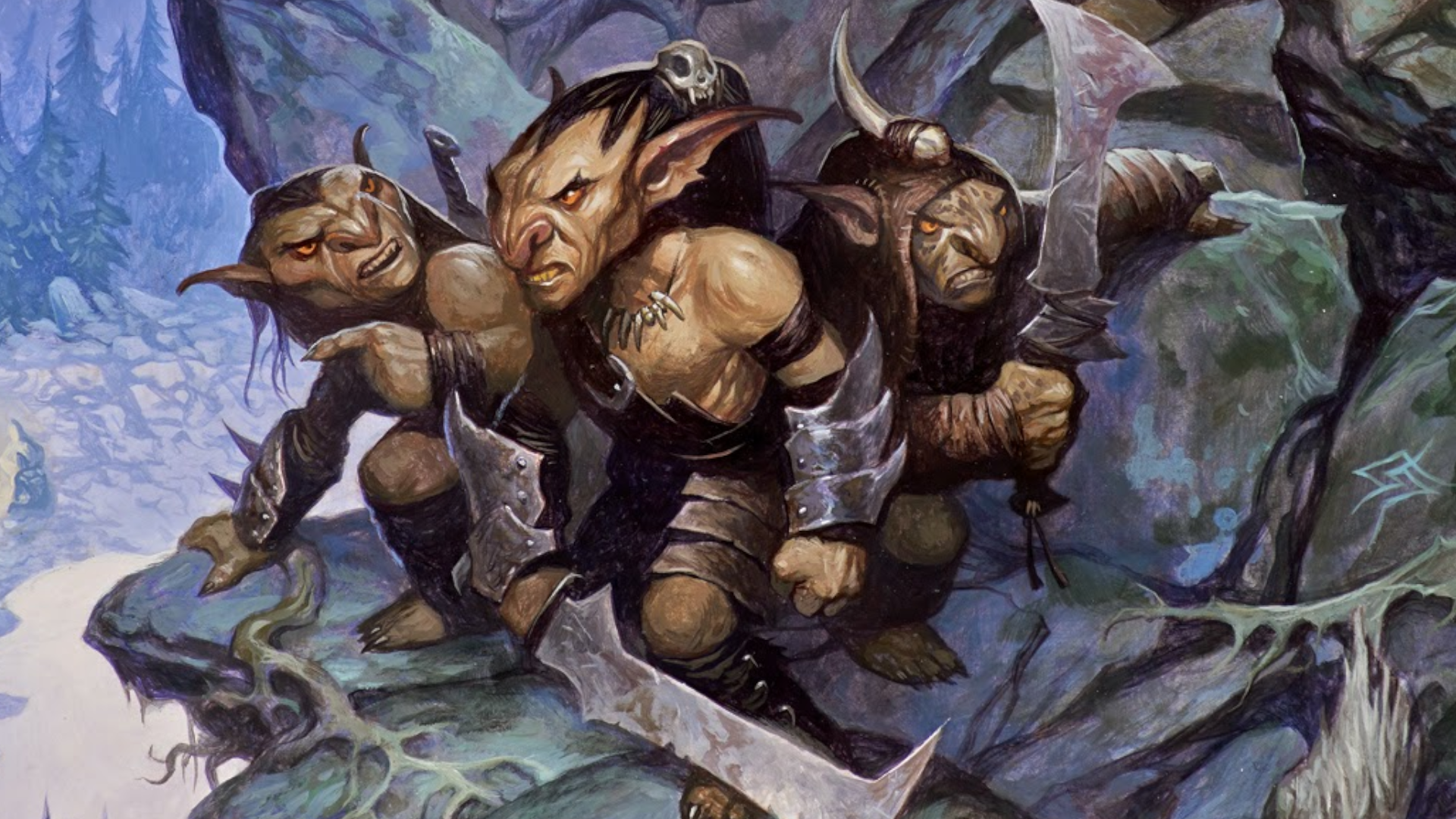D&D's new free introductory adventure is a cute, functional taster session that lacks teeth—and I'm worried it teaches some bad habits
Aw, fudge.

Dungeons & Dragons 5th edition came with its own starter set way back in 2014. In it, players could go through the start of the Lost Mines of Phandelver adventure—which began with a harsh goblin ambush that could cause character deaths, and even wipe out the party.
Phandelver was free for a while, making it one of the first entries to D&D for a lot of players and DMs before it was replaced by the new paid starter set (as well as the revamped Phandelver and Below: The Shattered Obelisk book). Now, there's instead a far simpler, streamlined adventure up for grabs: Peril in Pinebrook.
To be completely fair, Pinebrook is designed for younger players. It makes sense to find ways to ease the youth (or maths-adverse adults) into D&D before they have to worry about the distinction between a Melee Attack, a Melee Weapon Attack, and an Unarmed Strike.
In terms of doing that, I think the adventure's largely fine. It broadly explains what being a DM means, easing them away from a 'players vs. DM' mindset. It even shakes off the shackles of 'never say no to your players', a glittering piece of advice that's complete DM poison in disguise. Instead, Pinebrook encourages the more sensible strategy of using "'Yes, and…' or 'No, but…'".
When it comes to combat, things get rockier. The adventure does some smart things, simplifying character sheets and doing away with initiative orders. Its advice on running combat, however, is really toothless. This section in particular sticks in my craw:
"Running an exciting combat in D&D is like a thrilling amusement park ride: the players often want to be scared and excited, but they don't want the excitement to lead to certain character death. This is where you can perform storytelling and mathematical magic."
The section then goes on to recommend the DM spread out attacks, give the players advantage and the enemies disadvantage, or even have the baby dragon they're escorting intervene. This is 'fudging', and while it has its place, it's by no means universal advice.
Keep up to date with the most important stories and the best deals, as picked by the PC Gamer team.

I won't say I've never lied about a dice roll or chipped off a couple of hit points, but DMs who fudge everything rob their players of D&D's most interesting elements: gambling, risk, and consequence. Again, this is a book for younger players—it's fine to suggest a DM handles the players gently on their first go.
Which is a hair confusing, seeing as rules-as-written, players can't die in Peril in Pinebrook anyway, as mentioned in its section on hit points. "In this adventure, a character at 0 hit points remains unconscious until they regain hit points through healing or until the end of the encounter, when they regain 1 hit point automatically." Not a single death saving throw in sight.
But assuming this stripped-back D&D is targeted at an age range of around 10-15, I think it's kinda condescending to assume players of that age can't handle the risk of character death, or that they wouldn't find it exciting. That's a huge cognitive leap, especially considering all the edgy forum OCs I remember from my brief stint as a teenager.
This feels like an overcorrection of Phandelver—which is fair. In case you aren't as familiar with 5th edition as I am, the issue there stemmed from level 1 players having a piddly pool of hitpoints. For example, a Wizard with no Constitution bonus has about four. The goblins deal around five points of damage with their crossbows.
That's enough to knock our poor novice mage unconscious, but it's also enough to just murder them outright. On a critical hit, one of these goblins could hit you for 4-14 damage. If you take damage that knocks you out, and the remaining damage is more than your maximum hit points, you just die.
There's also the fact that, being an ambush, there's a chance these goblins would give your whole party the "Surprised" condition, causing them to stand around sucking their thumbs until their second turn of combat.

Obviously, there's plenty wrong with the ambush. But I also do think some players get hooked by that experience. The danger is what draws them in. I feel like any good starter guide—even one for younger players—should make it clear that's an option. It's not like Wizards of the Coast doesn't know this already. One of the more popular adventures, Curse of Strahd, relies on mechanical danger to sell its horror aspects.
That's not to say Peril in Pinebrook is a terrible first introduction in itself. I like the setup—escorting a baby dragon back to its mother is a sweet concept. I like how it streamlines your first combat encounters, and how it prompts the DM to leave breaths in between exposition dumps for the characters to roleplay.
It's certainly not perfect though. If the players try to harm the baby dragon, the Captain doesn't let them while the adventure sort of just shrugs as to what that looks like. If they try to attack the mama, the DM is encouraged to handwave it, which is a cardinal sin in my mind.
The solutions presented are 'have it ignore the attacks' or, if pushed too far, it breathes magic 'teleports you outside' breath and they don't get a reward. I don't know if any of these options are better than giving the thing a very powerful stat block. There's also a suggestion for it to tell the party to 'stop being silly', and I can't imagine a faster way to start an argument between a table of 13 year olds playing a TTRPG for the first time.
Letting the players fight it and get (non-lethally) trounced with the rules they've already understood would be a good teaching moment. 'Sure you can fight stuff, but it can flatten you', rather than 'I don't want you guys to attack my big dragon'.
I just worry that, by treating a 'softer' DMing style as gospel, alongside a linear adventure that encourages railroading, this starter adventure risks giving DMs some bad habits early. Especially since it's free, meaning players of all ages will likely go for it as their first introduction to the game.

Harvey's history with games started when he first begged his parents for a World of Warcraft subscription aged 12, though he's since been cursed with Final Fantasy 14-brain and a huge crush on G'raha Tia. He made his start as a freelancer, writing for websites like Techradar, The Escapist, Dicebreaker, The Gamer, Into the Spine—and of course, PC Gamer. He'll sink his teeth into anything that looks interesting, though he has a soft spot for RPGs, soulslikes, roguelikes, deckbuilders, MMOs, and weird indie titles. He also plays a shelf load of TTRPGs in his offline time. Don't ask him what his favourite system is, he has too many.

